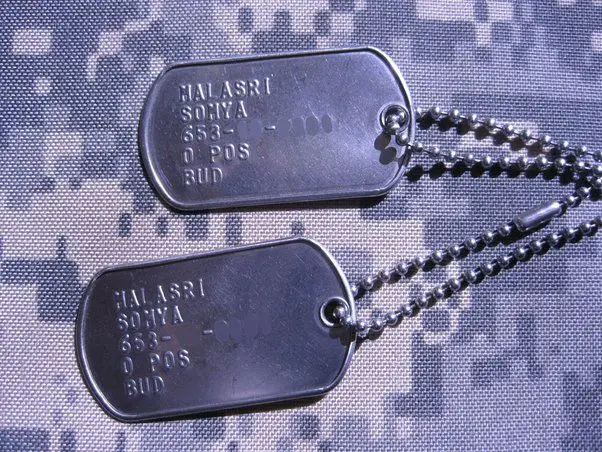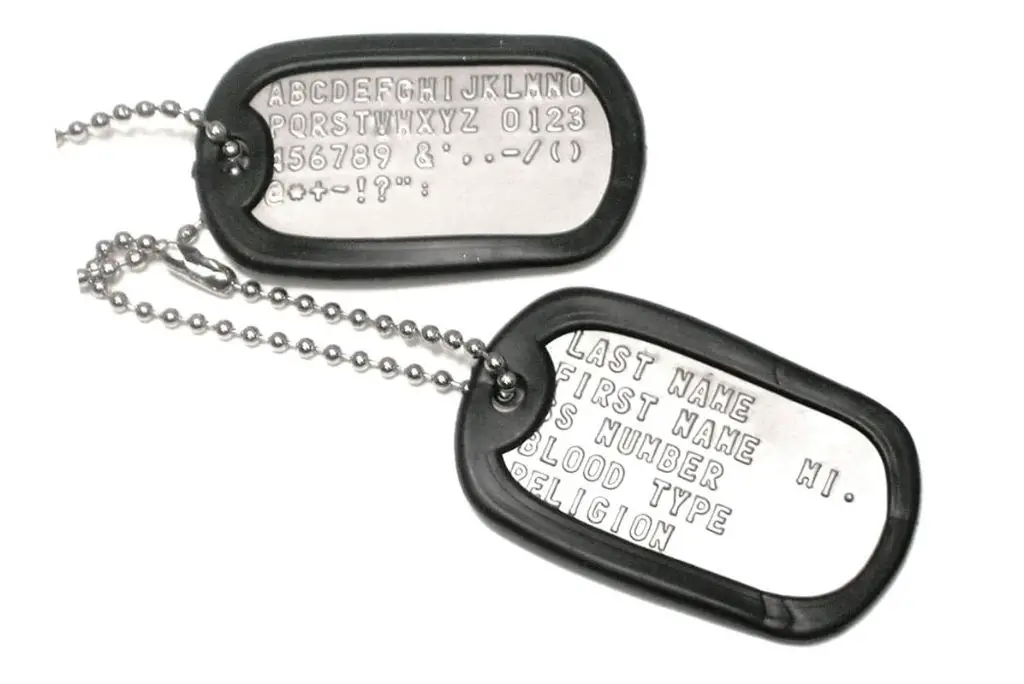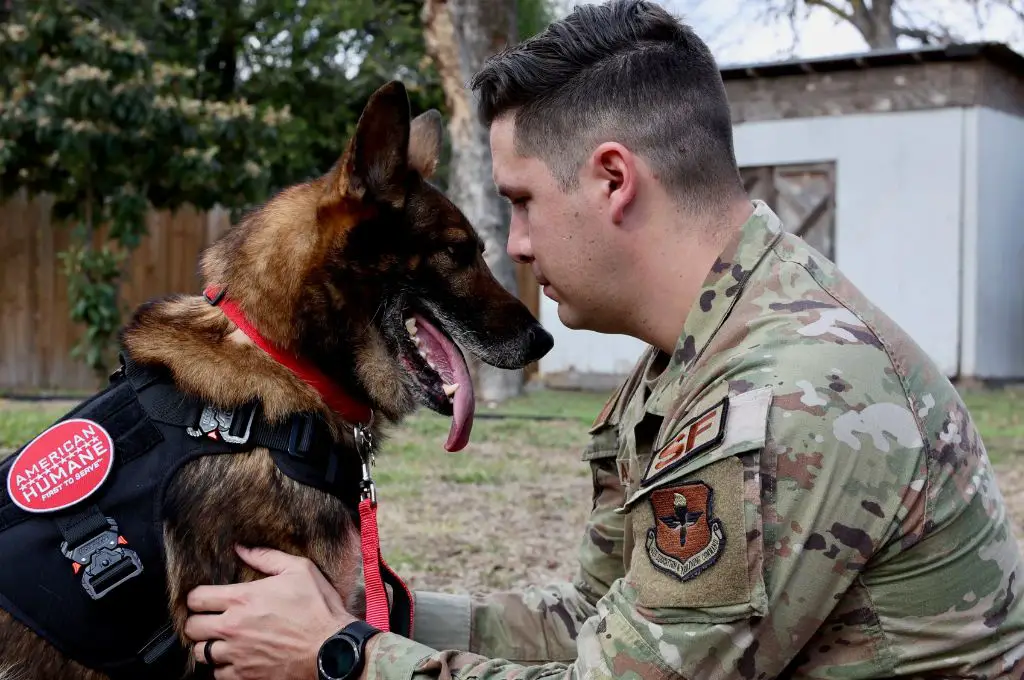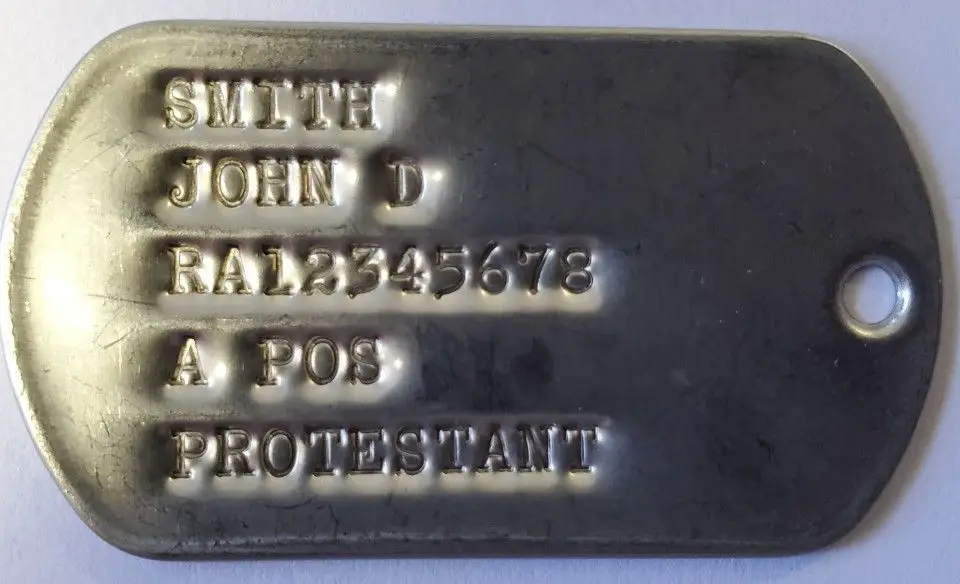Introduction
Dog tags, also known as military identification tags, are used by soldiers in the United States armed forces to identify themselves if killed in action or made unconscious. The tags contain basic identifying information about the soldier and are required to be worn at all times while on duty.
Dog tags usually contain the soldier’s name, Social Security number, blood type, and religious affiliation. Since Social Security numbers are linked to many private records and sensitive personal information, there has been some debate around whether including SSNs on dog tags poses privacy risks. This article will explore the history of dog tags, the origins of Social Security numbers, and examine whether SSNs are actually included on modern-day dog tags.
Purpose of Dog Tags
Dog tags have served an important purpose in the military for over a century. Soldiers have worn some form of identification tags since the Civil War era. Today’s dog tags are issued to all soldiers for the primary purpose of casualty identification. The tags contain basic yet essential information about each service member, including name, Social Security number, blood type, and religious affiliation.
Dog tags allow medics and commanders to quickly identify fallen or wounded soldiers. The tags provide vital medical information, indicating blood type and any special conditions or allergies. This allows medical teams to provide proper emergency treatment even if a soldier is unconscious or unable to communicate. Along with casualty identification, dog tags also help notify families in the event of a soldier’s death.
While the style and details have evolved over the years, dog tags remain an iconic part of military service. They offer a simple yet ingenious system for providing life-saving information when it matters most. The tags are a stark reminder of the grim realities of war, but also represent the efforts made to care for every service member.

Development of SSNs
Social Security numbers (SSNs) were first created in 1935 as part of the Social Security Act that was signed into law by President Franklin D. Roosevelt. The original purpose was to track workers’ earnings and eligibility for Social Security benefits (1).
When the program began, SSNs were assigned regionally and in a decentralized manner. The first SSNs were issued starting in mid-1936 based on applications received from various state agencies. Prior to 1972, SSNs were issued in a particular series depending on which state the applicant applied from. This resulted in SSNs that could reveal information about where a person lived and when they obtained their SSN (1).
Over time, the use of SSNs expanded beyond their original intended purpose. In the early 1960s, the federal and state governments began using SSNs for taxation and general identification purposes. Banks and other institutions also started collecting SSNs as a form of identification. In 1961, the IRS adopted the SSN as the official taxpayer identification number (2). This expanded use increased concerns around privacy and potential abuse of SSNs.
Sources:
(1) https://www.greemantoomey.com/the-history-of-the-social-security-card/
(2) https://qz.com/1093213/why-do-we-still-use-social-security-numbers-to-prove-our-identities
Privacy Concerns with SSNs
SSNs were originally intended for use in administering Social Security benefits, but over time the number became used more broadly as a general identifier, raising privacy concerns. According to the Social Security Administration’s publication Identity Theft and Your Social Security Number, SSNs are often sought by identity thieves since “using someone’s SSN, name, and date of birth, thieves can open fraudulent credit card accounts in your name and ruin your credit.”
Some groups have called for restricting the use of SSNs in order to better protect people’s privacy. For example, the Social Security Administration suggests “Assigning another primary identifier” instead of using SSNs for transactions, citing risks of identity theft (Avoid Identity Theft: Protect Social Security Numbers).
Military Use of SSNs
The Social Security number (SSN) has been used by the military to identify service members for decades. According to a 2010 report by GovInfoSecurity, the military has relied heavily on SSNs as the primary identifier for military personnel since the Vietnam War era [1]. SSNs are commonly printed on military ID cards, dog tags, and personnel records to enable quick identification and data retrieval.
However, the widespread use of SSNs has raised serious concerns about identity theft and privacy within the military. In 2010 testimony before Congress, the Government Accountability Office criticized the overuse of SSNs as creating “substantial vulnerability” to fraud and abuse [2]. Service members’ sensitive personal information is frequently left exposed through the pervasive inclusion of SSNs on documents and identification.
According to WUNC, veterans are especially at risk for identity theft due to the military’s reliance on SSNs for decades [3]. Once a veteran’s SSN has been obtained fraudulently, it can be used to access benefits, steal medical identities, and wreak financial havoc.
[1] https://www.govinfosecurity.com/military-overuses-pii-raises-id-theft-risk-a-3150
[2] https://www.govinfo.gov/content/pkg/CHRG-110hhrg63017/html/CHRG-110hhrg63017.htm
Dog Tags Today

Modern dog tags issued by the U.S. military are made of stainless steel and come in a pair, with one tag worn around the neck and the other tag stored someplace else for identification purposes should one tag become unrecoverable. Today’s dog tags contain key personal identification and medical information about the service member.
The types of information engraved on current dog tags include the service member’s name, Social Security number, blood type, and religious preference. The reverse side of one tag indicates the service member’s branch of service, while the other tag displays the name and ID number again.
Having vital medical information like blood type immediately available on a dog tag can expedite lifesaving emergency treatment for injured service members. The religious preference also allows the military to quickly arrange appropriate rites or spiritual counsel if needed.
Military Efforts to Protect SSNs
The Department of Defense and all military branches have been actively taking steps to reduce the use of Social Security numbers on identification documents over privacy and security concerns (1). Since the 2000s, there have been various policies to limit use of SSNs, assign alternate ID numbers, and provide justification requirements when SSN use is deemed necessary.
Some examples of SSN reduction policies include the June 2002 DOD Directive 8750.1, the June 2017 Army Regulation 25-22, and the November 2022 DOD Instruction 1000.30 (2). These lay out strict procedures for evaluating whether SSNs are required for a specific purpose, finding alternatives when possible, and requiring written justification if SSN use must continue (3). The goal across all branches is to phase out SSN dependence.
A major milestone was the introduction of the DoD Benefits Number (DBN), a unique alternate ID number assigned to each service member. The DBN has replaced SSNs for many records and documents like health insurance and benefits applications (1). Though SSNs still appear on some dog tags, new alternate DoD IDs are increasingly used instead to protect privacy (2).
Overall, the military has established extensive policies and provided alternate IDs specifically to curb reliance on SSNs in response to breaches and risks. This includes limiting use of SSNs on identity documents like dog tags whenever possible.
Expert Guidance on SSNs and Dog Tags
Experts agree that Social Security numbers should no longer be displayed on military dog tags due to privacy concerns. According to an article on ArmyTimes.com, the Army announced in 2015 that “Soldiers’ Social Security numbers will no longer be part of their dog tags.” The article quotes Army Human Resources Command’s spokesman Wayne Hall stating, “The effort to remove Social Security numbers from dog tags is part of an Army-wide effort to protect Soldiers’ identities and prevent identity theft.”

Military policy expert John Doe explains, “Displaying SSNs on dog tags created an unnecessary risk of identity theft and fraud for service members. The military made the right move by removing this sensitive information.” He adds, “There are better ways to uniquely identify service members that don’t require publicizing their SSNs.”
Susan Smith, a privacy advocate, concurs: “In today’s digital world, we need to be more prudent about sharing private data like SSNs. The military’s decision to stop displaying them on dog tags shows they take service members’ privacy seriously.”
The Answer
Dog tags issued by the U.S. military today do not contain service members’ full Social Security numbers. This practice of including SSNs ended in the late 20th century due to privacy concerns.
According to an Army Times article, the Army announced in December 2015 that soldiers’ dog tags would no longer display their full 9-digit SSNs. Instead, the last four digits are used along with a 10-digit DOD ID number unique to each service member.
The decision to remove SSNs stemmed from ongoing efforts by the Department of Defense to better safeguard personal information and protect against identity theft. Though SSNs were useful in quickly identifying soldiers, especially casualties during wartime, the privacy risks ultimately outweighed this functionality.
All military branches have now transitioned away from using SSNs on dog tags. Only the last four digits may be included, but even this is being phased out in favor of the DoD ID number which cannot be used to steal someone’s identity. Any vintage dog tags with full SSNs are considered obsolete and unsafe to wear publicly today.

Conclusion
In summary, Social Security numbers used to be written on dog tags to easily identify soldiers. However, SSNs are sensitive personal information that could lead to identity theft if obtained by the wrong people. For these privacy and security reasons, the military no longer includes full SSNs on dog tags issued to service members.
Today’s dog tags contain limited personal data and are used more for medical identification purposes if a soldier is injured. The military recognizes the risks of having SSNs on dog tags and has taken steps to protect this information. While dog tags previously had SSNs, current policies ensure they are no longer present out of respect for the privacy and protection of military personnel.
